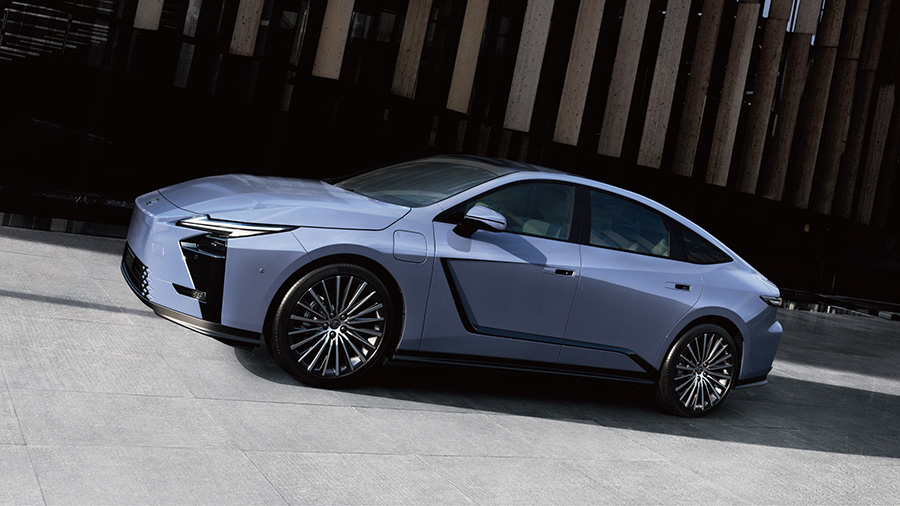2025 Chevrolet Blazer EV SS First Drive Review: Welcome Back, V6 Malibu
Neither you nor the Blazer EV needed 615 hp. It's here, though, mainly to one-up its rivals (and yours). The post 2025 Chevrolet Blazer EV SS First Drive Review: Welcome Back, V6 Malibu appeared first on The Drive.

Not that long ago, a sub-four-second zero-to-60 was the stuff of bona fide supercars. These days, anything with a big enough battery and two relatively simple motors makes that look like child’s play. Enter the 2025 Chevy Blazer EV SS. After several years and an admittedly rough start, Chevy’s finally ready to offer up the high-output version of its midsize, battery-powered crossover. This two-row already offered commendable creature comforts and a high-tech cabin, and now you can throw 615 horsepower at the formula, unlocking the sort of acceleration that feels like it’s deforming your eyeballs. But is it a true performance EV, if such a thing even exists? That’s what I flew to Charlotte, North Carolina last week to find out.

The Basics
In spirit, the Blazer EV SS’s formula is very similar to that of the Jeep Wagoneer S. Unlike Jeep, though, Chevy brought the basic version of the Blazer EV to market first, leaving the sporty SS for last. The Chevy’s also about $10,000 cheaper strictly comparing between high-performance variants. While we appreciate the Wagoneer’s highfalutin brand aspirations, we could happily live with the Chevy’s less fancy interior for a discount that hefty. And if a luxurious cabin is your chief priority, we’d point you toward the Cadillac Lyriq.
Speaking of the Cadillac, many of the SS’s performance gizmos are shared with the upcoming Lyriq-V. They get the same max power output in Wide Open Watts (WoW) Mode, 615 horses, and produce the same amount of torque: 650 lb-ft. They also both get a configurable drive mode setup that allows you to tweak steering, throttle, and brake behavior. Both even offer a “Competitive Mode” that backs off on the stability control, allowing you to throw them around corners without their SUV brains thinking you’ve gone all Bad Boys.




But generally speaking, that’s the extent of the Blazer’s fun stuff. The 22-inch tires come wrapped in summer rubber, but while the suspension was retuned to support the SS’s sportier mission, it still rides on old-fashioned steel. There’s no Magnetic Ride Control or air suspension to be found here. Plus, it weighs more than 5,600 pounds. Given that, you may be as surprised as I was to learn that Chevy fully intended to let us drive this thing on a race track.
Driving Experience
I’ve been stranger places to do stranger things, but I didn’t exactly have this on my short list. Nonetheless, that’s how I ended up at Ten Tenths Motor Club—a new private road course attached to the Charlotte Motor Speedway campus—staring down the front straight, pinning both the accelerator and brake pedals to the floor. Life’s weird. Just go with it.

When you lift your left foot, sure enough, you go. Chevy says the SS can do zero to 60 mph in 3.4 seconds. The Blazer itself stopped counting at 3.3. The acceleration timer engages automatically when you activate launch control, which you can do in any of the Blazer EV’s drive modes—with or without the Wide Open Watts. That’s the extra feature you have to activate to unlock all of the Chevy’s 615 hp; otherwise, you’re cruising around in the equivalent of eco mode, with 100 fewer ponies in the stable. We suspect that’s how Chevy was able to certify the SS’s total range at 303 miles.
That’s respectable for any electric SUV this heavy (the 102-kWh battery pack certainly doesn’t help there), let alone one that Chevy felt comfortable turning loose on a racing surface. I use that last term somewhat loosely. Ten Tenths strikes me as a fun private playground, but not the sort of place that lends itself to wheel-to-wheel competition. It’s a tight, technical course that was made even more so by rather close walls and strategically placed cones. The Blazer’s lead engineer warned us that the SS would behave like a big, heavy SUV if overdriven, and that we’d probably want to avoid that sort of thing in places where only 20-30 feet separated the tarmac from a safety barrier.

He told us point-blank that we should expect it to understeer even in the Blazer’s rather permissive Competitive Mode. The rest of his introduction echoed in my memory as I followed Chevy’s engineer around the course, but it was the basic premise that really struck me. Put simply, the SS isn’t meant to be a track vehicle. What the heck were we doing there, you ask? Hey, it wasn’t my idea.
But if you think about it, this makes sense. Even if you go back to the now-departed Camaro, the modern SS formula is decidedly middle-of-the-road. The one consistent element is extra power, which the Blazer EV SS offers in spades. There were no V6 or turbocharged four-cylinder Camaros wearing an SS badge; it was reserved for the V8. Track-spec models were instead denoted by 1LE, no matter what engine they were built around.

Instead, SS is meant to be the sort of daily driver you can enjoy a bit more viscerally within the constraints of your commute. Want to take the curvy road home? The Blazer’s game. Need to get out ahead of traffic at the light to make your turn? You’ve got all the power in the world. And critically, it does all of this without making a scene. Thanks to the ridiculously precise throttle control offered by its electric powertrain, you can rip off launch-control starts all day long without any outward drama.
At times, it seems like the Blazer EV SS is just incapable of being slow. The difference in our launch control times between a brand-new, perfectly smooth track surface and the beaten real-world roads of North Carolina was a whopping one-tenth of a second—matching GM’s 3.4-second estimate exactly. And even with WoW turned off, the SS is still quick enough to embarrass just about anything you might line up against.
The Competition
But in this, the Blazer EV SS is not alone. We already touched on the Lyriq, but there’s also the Jeep Wagoneer S and Tesla Model 3 Performance. The latter is a sedan, but we expect the upgrades to trickle down (up?) to the Model Y soon enough. Tesla’s otherwise strong technical credentials are hampered by its thoroughly artificial drive experience, while the Wagoneer offers better feel (more akin to a Grand Cherokee than anything else) at a price point clearly intended to compete with the Cadillac.
Given the choice between the Blazer, Wagoneer and Elon’s forthcoming dorkmobile, the Blazer starts to make some degree of sense. Its chassis is a strength, rather than an afterthought and if you really must let your car drive for you, it even comes with standard Super Cruise. While lacking FSD’s lofty aspirations, Super Cruise offers an Autopilot-like experience—not to mention the simple peace of mind that comes from using a feature that reliably works as described.

The Early Verdict
At its core, the 2025 Chevrolet Blazer EV SS is just a Blazer EV with more gumption, and while we may not be in love with the base car, it’s a reasonable, honest all-electric conveyance.
GM appears to have put the bulk of its nasty software teething issues behind it, and our experience was marred only by a single glitch: While traveling through a construction zone where a two-way street had been reduced to one lane, the Blazer must have been spooked by the too-close cones. We weren’t doing more than 30 mph at the time, but the momentary red alert from the automatic emergency braking system applied maybe a quarter second of full panic braking before retreating back to hibernation. It felt less like an intervention than an impact; even my passenger thought I had hit something. Apart from that, it was smooth sailing, from the nav system to phone pairing and audio streaming, the Blazer offered a hiccup-free experience.
Despite the “SS” nomenclature, I would hesitate to call this version of the Blazer a “performance” car. Sure, it’s quick—muscular, if you will—and competent as a daily driver, but even neck-snapping acceleration gets old after a while. Think of this like the old V6-powered midsize sedan—sure, you’ll have an easier time keeping up with with traffic on the highway, but you’re really buying it just to one-up the neighbor who couldn’t justify springing for the extra power. Only this time, you’ve got a whole lot more of it.
| 2025 Chevrolet Blazer EV SS Specs | |
|---|---|
| Base Price (as tested) | $61,995 ($63,785) |
| Powertrain | dual-motor all-wheel drive | 102-kWh battery |
| Horsepower | 615 |
| Torque | 650 lb-ft |
| Seating Capacity | 5 |
| Cargo Volume | 25.8 cubic feet behind second row | 59.8 cubic feet behind first row |
| Curb Weight | 5,700 pounds (approx.) |
| 0-60 mph | 3.4 seconds |
| EPA Range | 303 miles |
| Max DC Charging Speed | 190 kW |
| Score | 7/10 |

Quick Take
As a “performance car,” the SS feels a bit like a one-trick pony. As a daily driver that simply happens to have 615 hp, it’s not bad.





Got tips? Send ’em in to tips@thedrive.com
The post 2025 Chevrolet Blazer EV SS First Drive Review: Welcome Back, V6 Malibu appeared first on The Drive.












































































